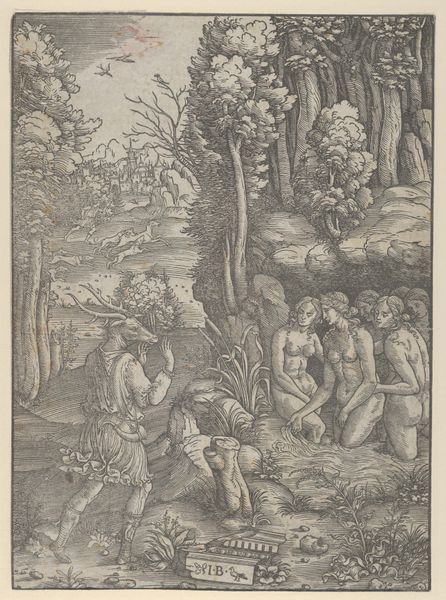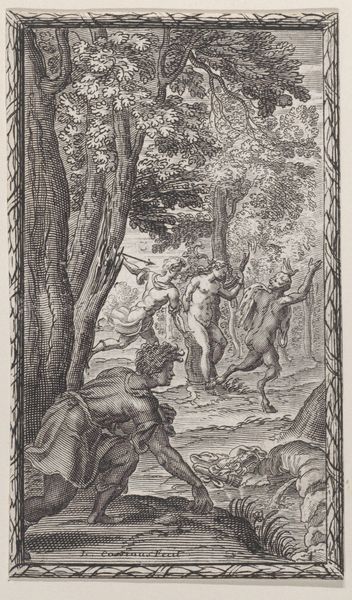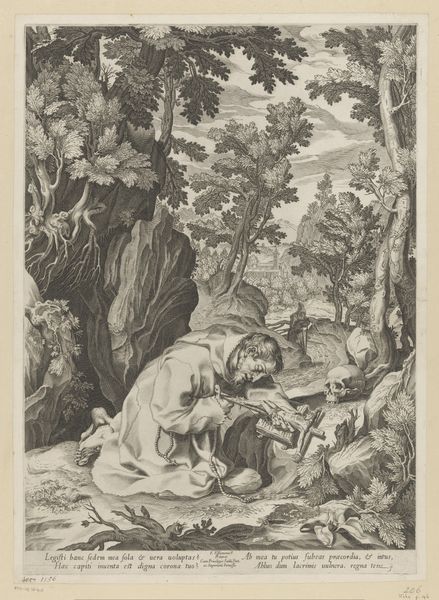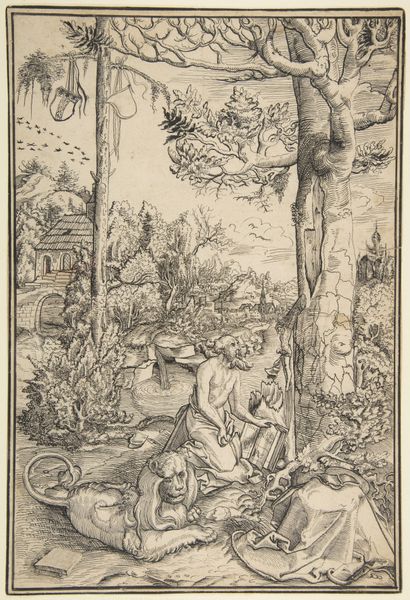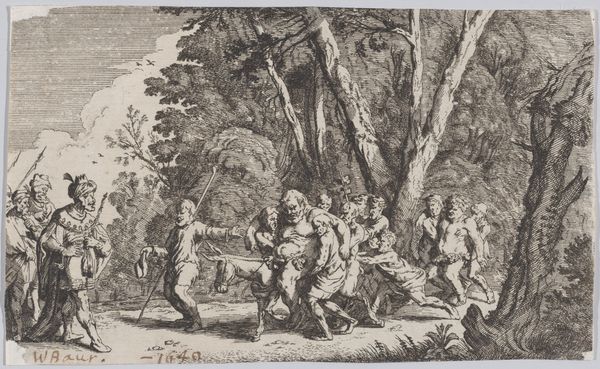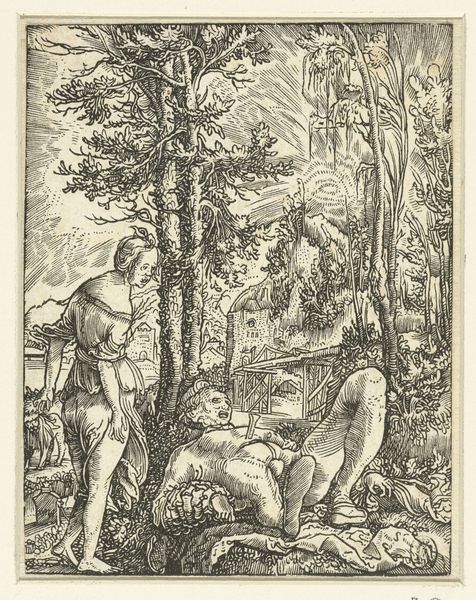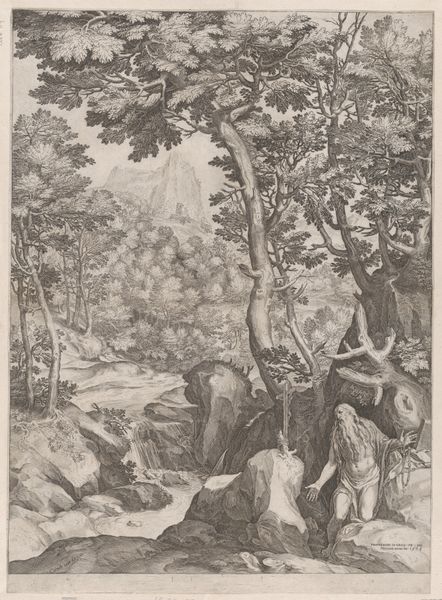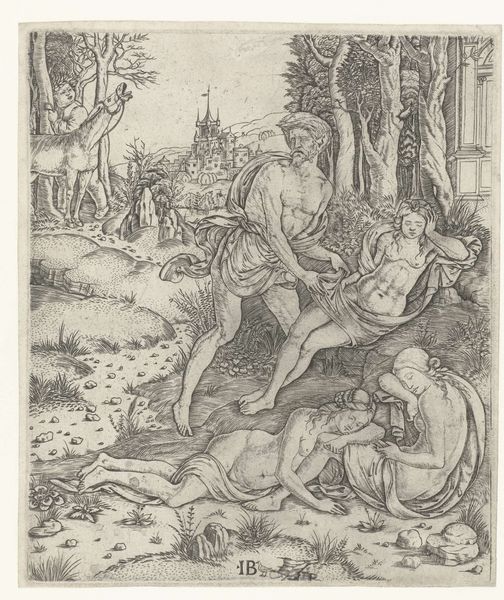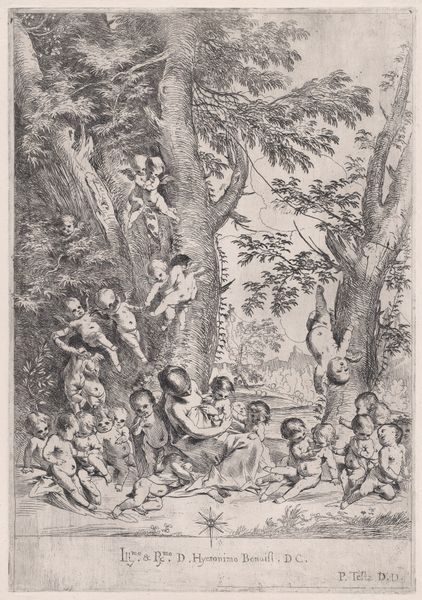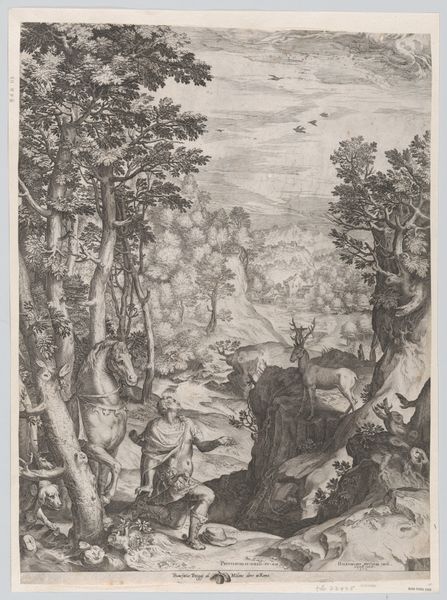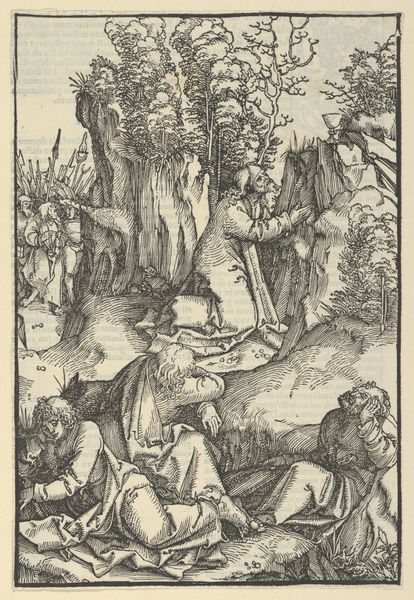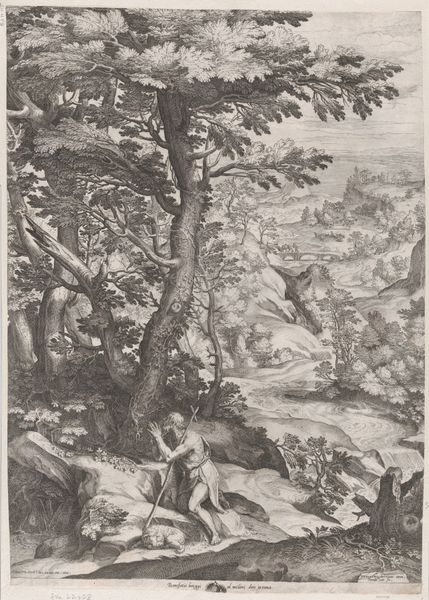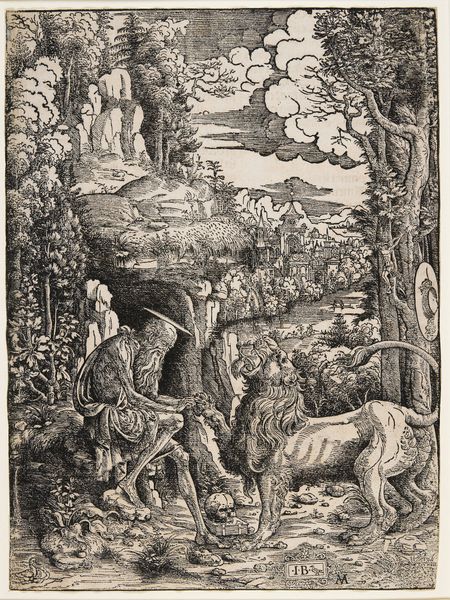
Diana turning Actaeon into a stag 1500 - 1510
0:00
0:00
drawing, print, etching, engraving
#
drawing
#
allegory
#
narrative-art
#
pen drawing
# print
#
etching
#
landscape
#
figuration
#
female-nude
#
line
#
northern-renaissance
#
engraving
#
male-nude
#
realism
Dimensions: Sheet: 11 7/8 × 8 9/16 in. (30.2 × 21.7 cm)
Copyright: Public Domain
Curator: Look at this dynamic print. Giovanni Battista Palumba made this engraving, "Diana turning Actaeon into a stag," sometime between 1500 and 1510. Editor: Wow. Immediately, I'm struck by the transformation. It feels claustrophobic and strangely tender. I sense guilt… or is that just me projecting? Curator: Well, let’s dig into the making. Etching, engraving and perhaps some drypoint techniques were used here. The physicality of these graphic arts allows the creation of multiples, of course, democratizing images, while establishing very strict parameters. This allowed this myth to proliferate. The artist made careful considerations to control line quality. Editor: True, those tight lines build a world dense with plants, nude figures, and this central figure caught mid-metamorphosis. It's like a peek into a very private moment disrupted. The tools of the trade definitely affect the narrative; a painting would convey an entirely different aura. Curator: Indeed, engraving allowed artists of the era to meet consumer demand. This piece reveals cultural ideas of punishment, class, and viewership in Northern Renaissance society, while playing on classical themes. Editor: It also has a surreal, almost Kafkaesque quality. Poor Actaeon gets punished simply for looking! Is it a commentary on male desire or the unyielding power of divine judgment? I can't decide if it's beautiful or deeply unsettling. Curator: Maybe both. Examining its material existence as a carefully crafted product—its labor and distribution—reveals an economy where classical narratives meet the rising tides of print culture. The myth becomes less rarefied. Editor: You're right. Even then, accessibility shifted perceptions. Seeing such images probably fueled all kinds of internal dialogues in a changing world. For me, I'm left thinking about violation, consequences, and the often strange beauty of unwanted change. Curator: Yes, a poignant collision of technique and cultural moment, definitely. Editor: Absolutely.
Comments
No comments
Be the first to comment and join the conversation on the ultimate creative platform.
